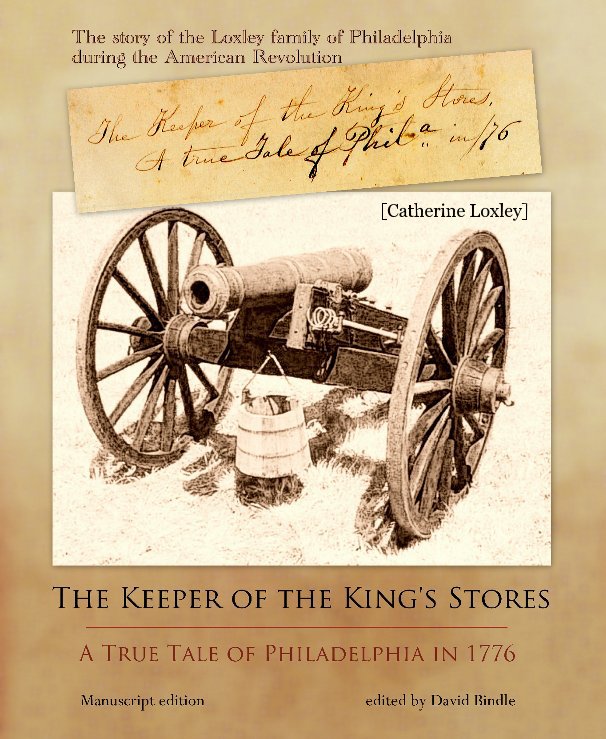Keeper of the King's Stores
A True Tale of Philadelphia in 1776 - manuscript edition
de [Catherine Loxley] - attributed, David Bindle, editor
Voici le prix vu par vos clients. Éditer la liste des prix
À propos du livre
This manuscript edition features a side-by-side transcription of images of the original manuscript with additional historical notes and images.
“The Keeper of the King’s Stores : a True Tale of Philadelphia in 1776” is a creative nonfictional account of events surrounding Major Benjamin Loxley and his family during the American Revolution. The story is somewhat unique in that it appears to be told from the perspective of Major Loxley’s wife; Catherine.
Though the manuscript is not signed by the author, the depictions of home life and the dialogue between husband and wife lead us to believe that it is written by a proud wife and mother - telling a heroic tale of her family’s experiences during the American Revolution.
A variety of internet resources make reference to Loxley’s friendships with Benjamin Franklin and George Washington. There are many documents affirming his significant involvement in the building of Carpenter’s Hall, among many other landmark properties in Philadelphia, such as Loxely Court, which are still in use today.
Written with an abundant dose of melodramatic narrative, this early example of creative non-fiction provides a refreshing perspective to Benjamin Loxley, better known for his career as a prominent Philadelphia builder than for his military involvement in the American Revolution.
This manuscript edition includes images of the original manuscript on the left leaf with the transcription on the right. It also includes notes by the editor about the transcription process, dating the document, discovering a family heirloom and other reading resources.
This book should be of interest to those who enjoy Philadelphia’s Revolutionary history, as well as the city’s rich architectural heritage and the builders responsible.
“The Keeper of the King’s Stores : a True Tale of Philadelphia in 1776” is a creative nonfictional account of events surrounding Major Benjamin Loxley and his family during the American Revolution. The story is somewhat unique in that it appears to be told from the perspective of Major Loxley’s wife; Catherine.
Though the manuscript is not signed by the author, the depictions of home life and the dialogue between husband and wife lead us to believe that it is written by a proud wife and mother - telling a heroic tale of her family’s experiences during the American Revolution.
A variety of internet resources make reference to Loxley’s friendships with Benjamin Franklin and George Washington. There are many documents affirming his significant involvement in the building of Carpenter’s Hall, among many other landmark properties in Philadelphia, such as Loxely Court, which are still in use today.
Written with an abundant dose of melodramatic narrative, this early example of creative non-fiction provides a refreshing perspective to Benjamin Loxley, better known for his career as a prominent Philadelphia builder than for his military involvement in the American Revolution.
This manuscript edition includes images of the original manuscript on the left leaf with the transcription on the right. It also includes notes by the editor about the transcription process, dating the document, discovering a family heirloom and other reading resources.
This book should be of interest to those who enjoy Philadelphia’s Revolutionary history, as well as the city’s rich architectural heritage and the builders responsible.
Caractéristiques et détails
- Catégorie principale: Histoire
-
Format choisi: Portrait standard, 20×25 cm
# de pages: 126 - Date de publication: juil 14, 2012
- Langue English
- Mots-clés Wartime families, Architecture - Philadelphia, Philadelphia history, American Revolution, Treason, Traitor, Loxley, 1776
Voir plus
À propos du créateur
David's research interest involves Special Collections Librarianship; specifically, in how digital technologies and communication tools are transforming the former methodologies in which libraries can pursue and develop their Special Collections and Archives. As well as developing new collection strategies, David is also involved in making "hidden-collections" discoverable through digitization and publishing initiatives. Combining his interest in photography with his research interests, he continues to publish unique subject specific books as a way of disseminating rare and unique manuscripts and collections.


